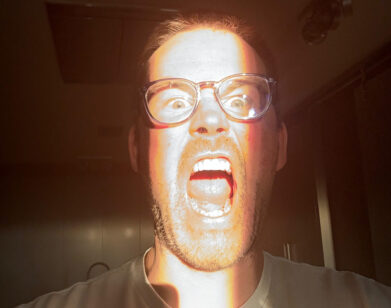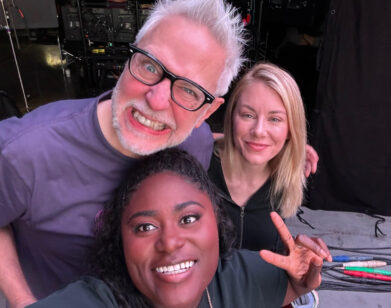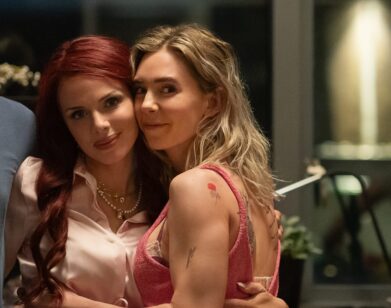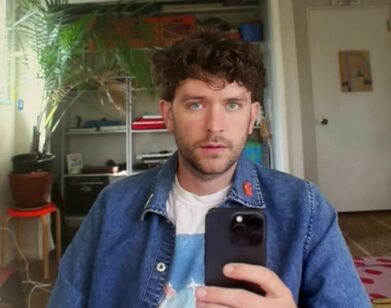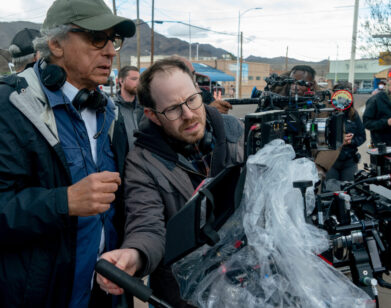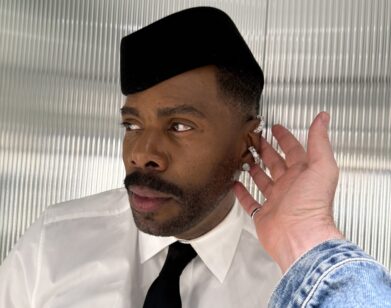Andrew Levitas’ End of Life Lullaby
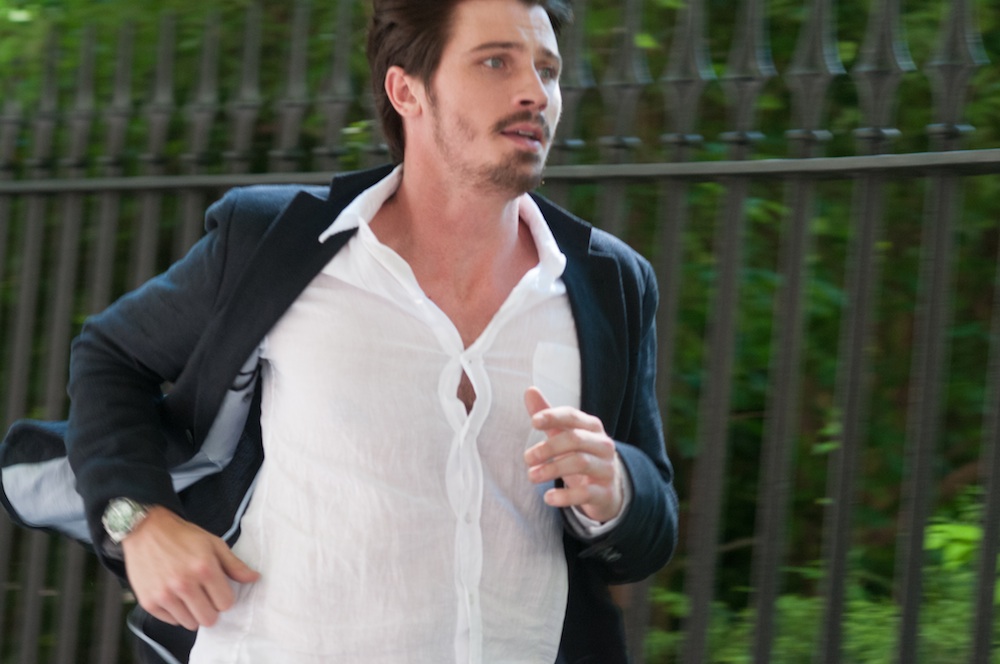
ABOVE: GARRETT HEDLUND IN ARC ENTERTAINMENT’S LULLABY. PHOTO COURTESY OF NICOLE RIVELLI.
“The best way to think through your own ideas is to make something,” explains Andrew Levitas. It’s a fitting declaration from a cross-disciplinary artist: an acclaimed painter, sculptor, and photographer, Levitas has held solo exhibitions across New York from the Gallery Valentine in East Hampton, to Phillips de Pury and NYU. In 2008, he became one of only a handful of American artists ever accepted into the prestigious Société Nationale des Beaux-Arts in its 150-year history.
In addition to photography, Levitas has dabbled in the film world with a series of acting and producing credits. This week, he will release his feature-length debut as a writer and director, Lullaby. Inspired by the death of Levitas’ own father 12 years ago, Lullaby begins with a terminally ill father who wishes to be taken off life support, and explores the effects of this decision on his family and friends. The weighty content is meant to generate discussion rather than dictate the answers.
Clearly, the right to die is not the stuff of light entertainment, but that’s never what the film is trying to be. With an exceptional cast including Garrett Hedlund, Amy Adams, Richard Jenkins, Jessica Brown-Findlay, Terrence Howard, Jennifer Hudson, and Anne Archer, Lullaby is an ultimately uplifting reflection on the end of life. “I don’t think there’s enough conversation about how meaningful this time is,” Levitas tells us. “The point was to create an experience about people. In some ways, it’s as close to documentary as you could make a dramatic film.”
Born and raised in New York, Levitas divides his time between Manhattan and L.A.. Interview caught up with him several weeks ago in SoHo to talk about freedom, the difference between his solo work and the collaboration that was Lullaby, and making a film that doesn’t apologize for itself.
ADRIAN RAPAZZINI: You have a lot of titles attached to your name—painter, sculptor, writer, producer, filmmaker, photographer, actor, NYU professor. Where did that begin? Is the rest of your family interested in the arts?
ANDREW LEVITAS: I come from a family of people who love the arts, and people who appreciate the value of art in our society. So I was fortunate enough at a young age to be at the theater all the time and the Met and at the ballet and museums. I was really immersed in it, so I’ve embraced the idea that if you see something that you care about, or that you’re interested in investigating, you paint it, or you write it, or you sculpt it, or you photograph it, or you make a movie about it. They’re all related. I think that being an artist is more an approach to life than an approach to work.
RAPAZZINI: I’ve heard that the film is biographical to some extent; can you talk about that?
LEVITAS: Well, the right to die issue was something that I’d dealt with in my family, so it was something that I was curious about—not so much in the political aspects of it, but more in the fact that people in Western culture don’t seem to accept death as a part of life, they see it as the end of life. And when people don’t talk about these things, they become scarier. So my story that I lived through with my family—while certainly not as dramatic as what you see in the film—felt like a great launching off point to talk about these issues.
RAPAZZINI: So given the transition from nonfiction to fiction, how was the writing process?
LEVITAS: Writing the screenplay was an exercise for me to figure out my feelings on some of this stuff. In particular, on freedom. What does freedom mean in Western millennial culture? What does freedom mean to us? We live in a world where you can walk into a bookstore and get a how-to guide on just about anything. But no one tells you how to die with dignity. No one tells you how to go out like the winner. And my dad, for one, went out like the conquering hero of the world. And that’s what you see in the film. This movie is very real. It’s very honest and very real, and every actor was perfect for his or her role. Every one of these artists brought their own humanity into the film—their own ideas, their own feelings, their own questions about their own feelings, and what you seen on that screen is absolutely their own hearts.
RAPAZZINI: I read somewhere that you described this film as a really collaborative process. Can you talk about that?
LEVITAS: I have the incredibly good fortune of being able to make the majority of the work I produce in the world on my own with no one bothering me. It really comes entirely out of me. So when I get to the movie set, I don’t need to have that sort of iron fist that it’s about me and my ideas. A lot of filmmakers don’t have that benefit, so when they have their moment to let all that creativity out of them, it’s all about them. It’s their movie; it’s their thing. I don’t feel that this is my movie; I don’t feel like this is my thing. I feel like I just happened to be the guy there. I’m like the mediator of stuff instead of a dictator of ideas. This is a film that doesn’t apologize for itself at all, like what most of Hollywood is doing. This movie is very honest and very real. And people are scared of that; people shy away from it. Even people who are involved in the film were pushing me to cherry-coat things and cutesy it up. But I did not bend on any of those things.
RAPAZZINI: Were you wary about tackling the right to die issue?
LEVITAS: Well, I don’t care about anybody’s opinion—I care that this movie moves you in a way to think about things and consider your own life. And, with the right to die, I care about that subject. I don’t have an answer of what’s right or wrong, but it’s an important subject. It’s about dignity, and it’s about freedom. So many people in this country have their dignity and their freedom taken from them at the time that they most need support and they’re least able to fight for themselves. And that’s a real fucking problem. From a personal standpoint, anyone with a heart will look at someone in pain that they care about and want them to A) be able to do whatever they want, and B) support them and understand why they would want to do it. And then when you look at yourself, you’re like, “I want the right to do whatever the fuck I want to do. This is my world.” So it’s really complicated, and I set out to figure it out, but I didn’t figure it out. Ultimately, all I did was realize that there needs to be more of a conversation about it—about the right to die, about freedom, about ownership.
RAPAZZINI: What do you want the audience takeaway to be at the end of the film?
LEVITAS: The point wasn’t to put this up against any other film; the point was to create an experience about people. Like, “this is what shit looks like the in the real world.” It isn’t sugar coated, it doesn’t pull back—this is real world, real life. This was made so that you could sit in a movie theater and experience something, and I think that that was incredibly freeing for the actors. They didn’t have to judge themselves; they didn’t have to edit themselves. They got to be a real person—Garrett [Hedlund] plays a real version of a human being, he doesn’t play a “movie” version. Richard Jenkins plays a dying man who is trying to come to grips with the things that his illness has taken from him, which is his family. And it’s not the “movie” version of that happening; it’s the real version of that happening. And ultimately, I think that to channel truth is a pretty remarkable thing.
LULLABY COMES OUT ON FRIDAY, JUNE 13, IN LIMITED RELEASE.

